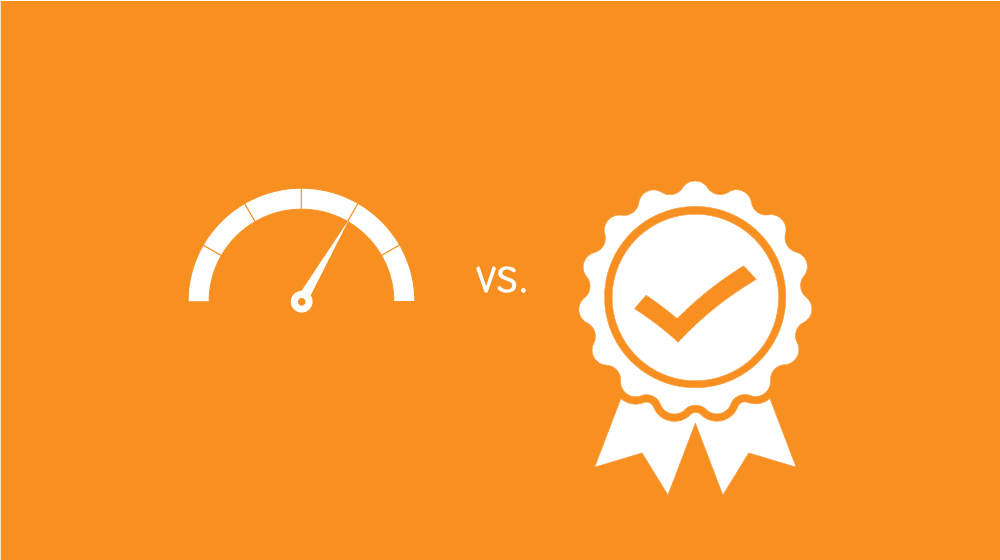When I say the word ‘standard’, what do you think and how do you feel? Now, when I say the word ‘expectation’, what do you think and how do you feel?
To me, these two words – despite being so similar in their initial positioning – mean totally different things. And when they are confused as one and the same thing, it causes an unnecessary amount of tension, stress and upset, which is frankly a complete waste of everyone’s time.
Think about how often you find yourself saying things such as: “I expected it to be done this way”, or “I would expect them to know how to do that”, or “Well, I wouldn’t have done it like that”, or, the classic: “Isn’t it obvious? It’s not rocket science!”
If you are nodding right now, please read on!
From experience, I can tell you that one of the most common reasons people leave an organisation is because they feel they can’t meet the expectations of the business, of the business-owners or of the financial planners.
It’s human nature to want to please, to deliver and to make someone happy by meeting their expectations, BUT with the continually moving goalposts of one person’s expectations over another’s, trying to second-guess what another person expects is not only exhausting, it’s quite frankly impossible.
Expectations are personal. Yet, when a person’s expectations are shared with others, there is often little to no guidance given in the first place about how to meet these expectations, because, let’s face it, our personal expectations can change from one minute to the next, depending how we feel at any given moment.
So, let’s imagine a business that has replaced expectations with standards
A business that’s been robust in its design and built on purpose. It has a fantastic team supported by well-documented, tested, effective and super-efficient processes and procedures. Each one allowing team members the freedom to share fully their creativity, and their tactical and strategic thinking, because the nuts and bolts of each of their roles are clearly set out and tasks can be performed without even thinking about it.
Businesses designed like this will thrive.
Sadly, we continue to see so many firms making it really difficult for themselves. They put the barriers of expectations up so high that the only outcome is the continual disappointment of those who are trying so desperately to meet them. Nobody wins.
When standards replace expectations – the magic truly starts to happen
The profession is finally waking up to the fact that high standards, well-thought-out structures, and robust processes and procedures are the bedrock of everything we are trying to achieve.
We get many enquiries every week from new firms that understand the importance of standards over expectations. They literally say, “I’m starting out and setting up my own firm”, “I’ve/we’ve just bought out the previous business-owners" or “I want to set up my own practice… and I want to set the standards so I do this right from the beginning.”
My first questions to these businesses are always:
- What are your personal standards?
- What standard of business you want to build?
- What standard of skills, abilities, attributes and behaviours do you want to establish in your team?
- What standard of client service do you wish to deliver? And…
- What standard of client do you want to work with?
At no point do I ask about expectations. Why? Because their expectations are secondary to the standards they want to set.
By setting the standards, you have a business that is repeatable, sustainable, scalable and of course, if it’s in your plan, sellable.
It’s time for a new approach
I urge you all to hold up that mirror and look at your own business – look at your language, how you position what needs to be done and to what level. Are you getting you the results you want? If not, it’s time to change the narrative.
How about banning the words ‘expectation’ and ‘expectations’ from your own, and your business’s, vocabulary?
What next?
- Start by reflecting on your current positioning of both expectations and standards within your own mind and your business. Be clear on your view of the differences.
- Speak with your team about this – get their input and ask them to define the two words. Ask them how they feel about them and how they feel you set, meet and even exceed these within the business.
- Does your business plan capture the essence of what the business is in relation to what it is striving to achieve in terms of quality and standards?
- Look at your current processes and procedures. Do they capture at the right level the actual standards you have or hope to set for how things get done?
- Look at how your current standards are documented and communicated with the team. Are they clearly shared and, more importantly, understood?
Ultimately, you need an operating model that sets the standards across the whole business.
One way to establish and then stress-test your internal and external standards is through third-party certification assessment. Standards International certifies against five certification standards that have been specifically designed for financial planning firms and their teams.
